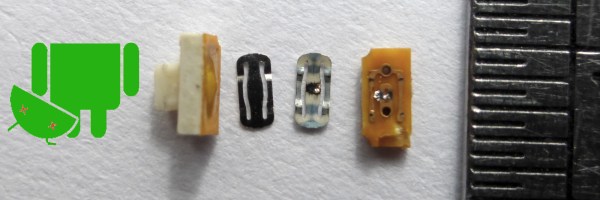We put a lot of trust into some amazingly cheap components, sometimes that trust is very undeserved. Long gone are the days when every electronic component was a beautifully constructed precision lab instrument. As [Rupert Hirst] shows, this can be a hard lesson to learn for even the biggest companies.
[Rupert]’s Nexus 5 was suffering from a well known reboot issue. He traced it to the phone’s power switch. It was always shorting to ground, even though it clicked like it was supposed to.
He desoldered the switch and pried the delicate sheet metal casing apart. Inside were four components. A soft membrane with a hard nub on the bottom, presumably engineered to give the switch that quality feeling. Next were two metal buckles that produced the click and made contact with the circuit board, which is the final component.
He noticed something odd and busted out his USB microscope. The company had placed a blob of solder on the bottom buckle. We think this is because steel on copper contact would lead to premature failure of the substrate, especially with the high impact involved during each switching event.
The fault lay in the imprecise placement of the solder blob. If it had been perfectly in the middle, and likely many phones that never showed the issue had it there, the issue would have never shown up. Since it was off-center, the impact of each switching event slowly deposited thin layers of solder onto the copper and fiberglass. Finally it built up enough to completely short the switch.
Interestingly, this exact problem shows up across different phone manufacturers, somewhere there’s a switch company with a killer sales team out there.














